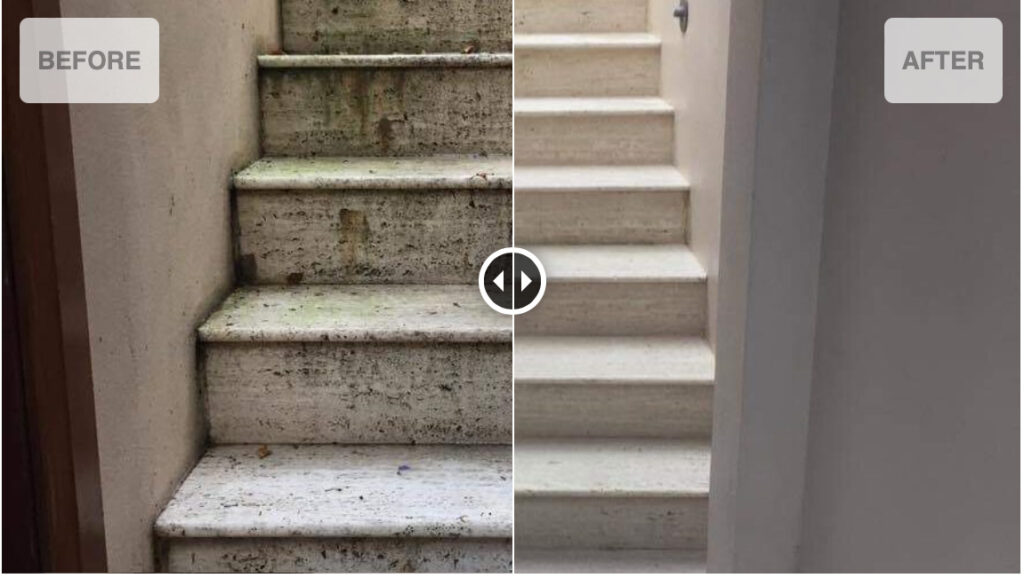Stone, regardless of being natural or synthetic, brings timeless beauty and value to any property. But, it isn’t immune to various types of damage. Maintaining and restoring your stone is crucial to preserving its elegance.
If you need expert natural or synthetic stone repairing services, seeking professional help can make all the difference.
Let us explore the common types of stone damage and how restoration can uphold both the integrity and aesthetics of your stone surfaces.
What Causes Cracks And Chips In Stone?
Cracks and chips are among the most frequent issues homeowners encounter with stone surfaces. These imperfections do not just mar the appearance of the stone; they can lead to larger structural issues if not treated promptly.
Weather Conditions
Stone is subject to harsh weather elements that can cause significant wear and tear. Rainwater, for instance, can seep into tiny cracks and spaces within the stone.
When temperatures drop, this water freezes and expands, causing larger cracks or even disintegration.
Humidity can also impact some types of stones differently, making them more susceptible to cracking.
Physical Impact
Everyday use or accidents can lead to physical impacts that chip or crack stone surfaces. Something as simple as a dropped kitchen utensil or a piece of heavy furniture being dragged across a stone floor can result in unsightly damage.
Outdoor stones are even more vulnerable to physical impacts, whether from falling tree branches or random debris during a storm.
Natural Wear And Tear
Just like everything else in life, stone does age and show signs of wear.
Foot traffic, for instance, can slowly wear down the surface of stone flooring, creating small chips over time. This natural aging process is inevitable but manageable with timely restoration efforts.
Why Does Stone Stain So Easily?
Many people are surprised at how stained their beautiful stone surfaces can become over time. Understanding why this happens will help you take preventative steps and seek effective restoration solutions.
Porosity Matters
Some stones are more porous than others, meaning they have tiny holes or spaces within their structure that easily absorb liquids.
Marble and limestone are particularly prone to staining for this reason. Even common household spills like coffee or red wine can penetrate the surface of these stones if not cleaned immediately.
Chemical Reactions
Certain stones react chemically with substances they come into contact with. For instance, acidic substances like lemon juice or vinegar can etch the surface of marble, leaving dull spots or even discoloration.
Constant exposure to chemicals found in cleaning agents can also compromise the integrity of some types of stone.
Daily Usage
Everyday usage contributes significantly to staining problems. Kitchen countertops face spills and splatters daily. Bathroom floors are constantly exposed to water and soap residues. The regularity of these activities makes it almost inevitable for some amount of staining to occur over time.
How Restoration Improves Surface Longevity
Different restoration techniques work best for various types of stones and damage. Let’s explore some key methods.
Polishing And Refinishing
Polishing helps bring back a stone’s shine by removing surface scratches and stains. Refinishing goes further by taking off a thin top layer of the stone, revealing a fresh, undamaged surface underneath. After this, sealing the stone adds an extra protective layer against future stains and scratches.
Epoxy Repairs
For more serious damage, like deep cracks or big chips, epoxy repair methods are very effective. Epoxy fillers can match the stone’s original color and texture, making repairs almost invisible. They also strengthen the damaged areas.
Grinding and Honing
Grinding uses abrasive materials to smooth out uneven surfaces or remove deep stains and etches. After grinding, honing is done to create a smoother finish and bring out the stone’s natural colors and patterns. These processes are especially useful for high-traffic areas that face a lot of wear and tear.
Summary
Knowing what causes damage—like cracks, chips, or stains—and how restoration can make your stone last longer will help you take better care of it.
Whether it’s cracks caused by weather or tough stains in your kitchen, there’s a fix for almost every type of damage you might face. Understanding these processes will help you choose the right maintenance and repair options for your stone.








